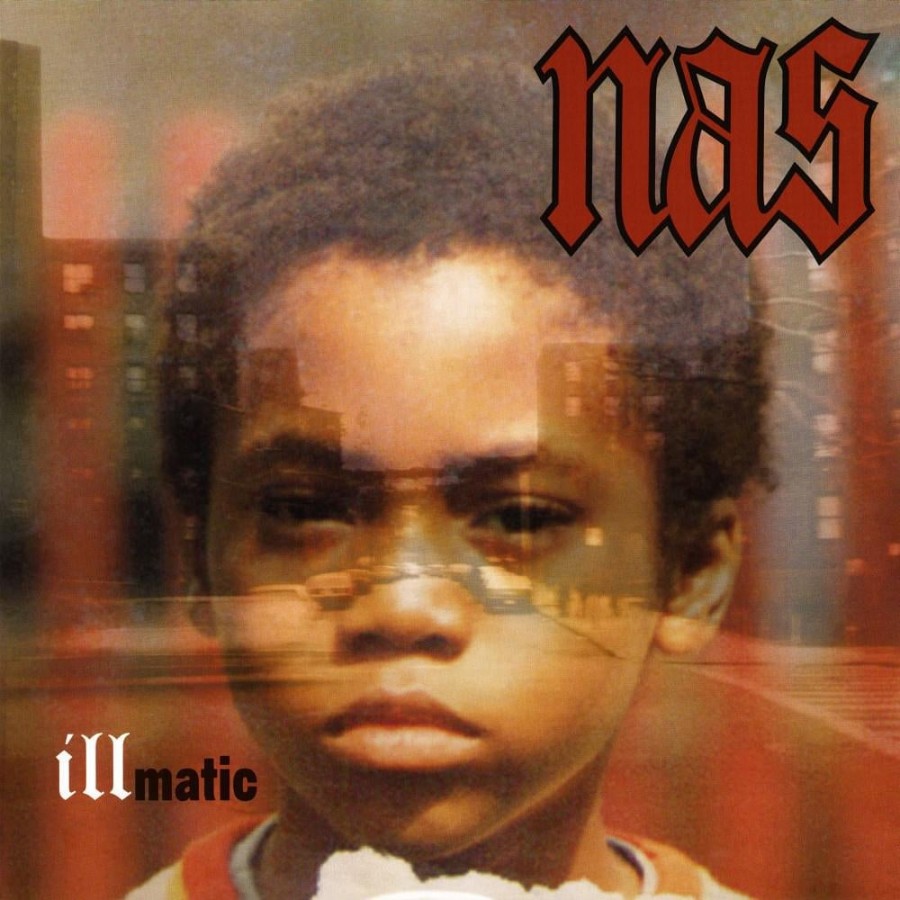Nas’ debut album changed the landscape of hip-hop 26 years ago, but does it still deserve its legendary status?…
East Coast rapper Nasir Jones’ first studio album is now 26 years old, well and truly qualifying it for classic status.
Many would even make a case for it being one of the greatest hip-hop LPs ever made, and the fact that it is still being played and analysed to this day certainly suggests that it’s among the most culturally influential.
Released in April 1994, Illmatic predates the debuts of fellow rap icons Jay-Z, Biggie and OutKast, introducing a new flavour to the genre that still permeates the greatest modern works.
So, to separate this forty-minute song-cycle from its legacy is not the easiest task; but exactly how much does Illmatic still hold up today? The answer: admirably, but not completely.
A comparison to the film Citizen Kane might seem odd, but may be appropriate here. Nas’ work elevated hip-hop, and on a “critically-correct” level is a superb album; but like Orson Welles’ masterpiece, its status shouldn’t make it exempt to criticism from a modern-day standpoint. Subsequent albums that have stood on the shoulders of this giant have caused its cracks to show.
First of all, let’s establish what still makes this LP so, so good.
Illmatic begins with ambient city sounds, dialogue samples from the film Wild Style, and the muffled sounds of Nas’ rap playing on the radio. We’re in New York, the “dungeons of rap” and the setting for the first song, N.Y. State of Mind.
This track radiates cool, and sets the precedent for how this album excels in the marriage of jazz-infused instrumentation with Nas’ signature flow and lyricism, featuring lines like the mantra “I never sleep, ‘cause sleep is the cousin of death.”
In the following track, Nas’ father, jazz musician Olu Dara, provides authentic trumpet instrumentation in the final seconds, an inter-generational collab offering time for reflection following more great rap from both Nas and featured artist AZ. It’s another of many examples of this album’s fusion of genres, but unfortunately the writing is let down by the clunky and poorly-aged hook “Life’s a bitch and then you die” throughout the rest of the song.
Nas’ creativity is at its strongest when he focuses on empowerment. That’s why the third track, The World Is Yours, is a major album highlight. Like N.Y. State of Mind, the piano loop is the heart of this song, but this time round it’s charged with optimism, punctuated by record-scratches and guided by some of Nas’ best poetry (“I sip the Dom P, watching Gandhi ’til I’m charged / Then writing in my book of rhymes, all the words past the margin”).
Most of the following songs aren’t quite as great as this. Granted, Nas is consistent throughout the middle section, and these tracks – particularly Memory Lane, with its soothing backing vocals – make for some great background listening that still holds up under lyrical scrutiny.
Yet, the unity between his rap and the instrumentals is less strong; it works, but the cohesive, deliberately plotted feel of N.Y. State of Mind and The World Is Yours seems somewhat absent.
Luckily, Illmatic picks up again for the final track. It Ain’t Hard to Tell utilises a looped trumpet riff amidst a sped-up sample of Michael Jackson’s Human Nature, and arguably the best ever use of the iconic Long Red shout. Production-wise, this is definitely the album’s peak. Rapping about how good of a rapper you are (“My poetry’s deep, I never fell / Nas’s raps should be locked in a cell”) is another part of this LP that should’ve stayed in the nineties, but Nas still proves his talent as a lyricist throughout this song and like The World Is Yours, you can’t knock how cohesive it is.
Since its release, Illmatic has been bested by the likes of Stankonia, The Blueprint and Kanye’s Late Registration. But 26 years ago, none of those albums existed; the artists that would go on to create them were listening to Nas, amazed and inspired by a hip-hop sound they had never heard before. This is a classic LP worthy of its place in the rap hall of fame.
Rating: 8/10
By Jamie Morris
Featured Image Credit: Columbia

